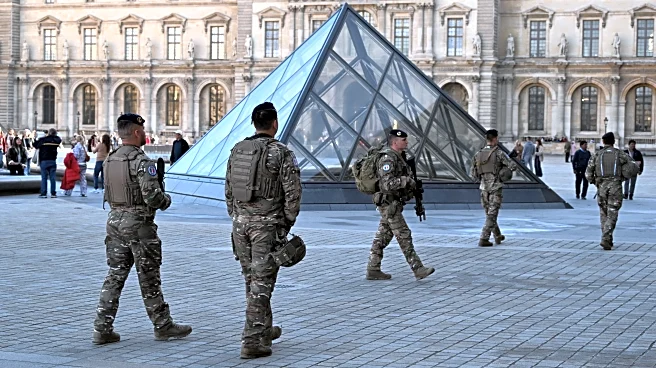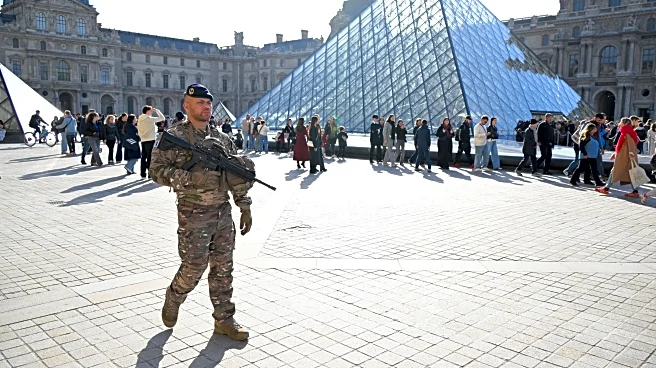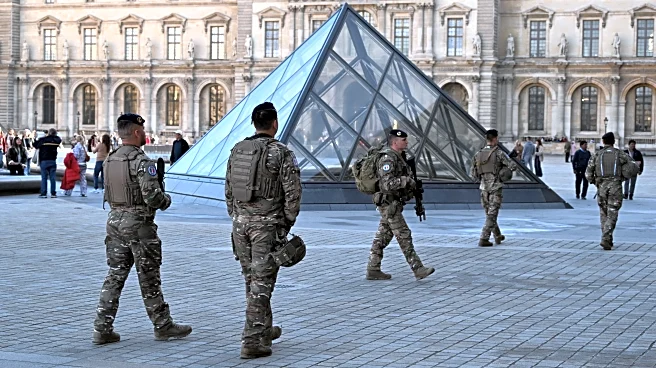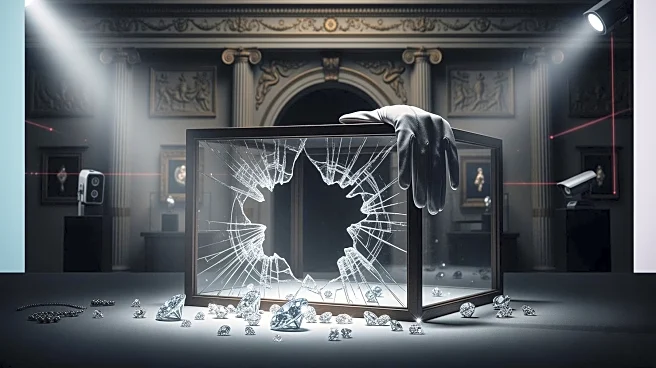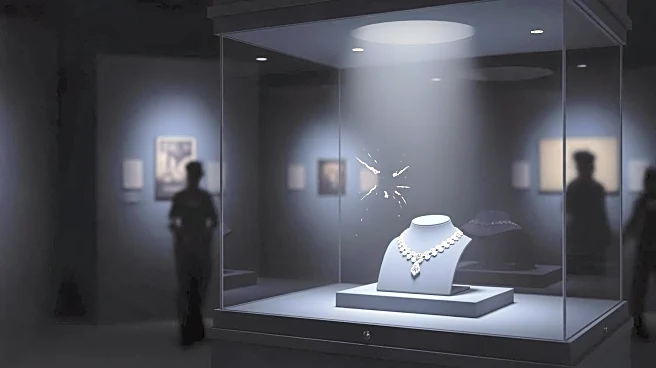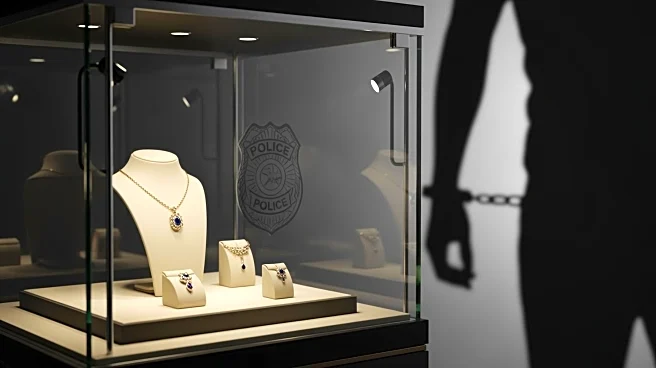What's Happening?
The Paris prosecutor has announced preliminary charges against two new suspects in connection with the high-profile theft of French crown jewels from the Louvre museum. The suspects, a 37-year-old man
and a 38-year-old woman, were arrested and charged with theft by an organized gang and criminal conspiracy. The man is known to authorities for previous thefts, while the woman has been accused of being an accomplice. Both suspects deny involvement in the heist, which took place on October 19 and resulted in the theft of jewels valued at approximately $102 million. The stolen items include a diamond-and-emerald necklace and a pearl-and-diamond tiara, among other historical pieces. Despite the arrests, the jewels have not been recovered, and the search for the four thieves who executed the heist continues.
Why It's Important?
This development is significant as it highlights the ongoing efforts by French authorities to solve one of the most audacious heists in recent history. The theft of such valuable and historically significant jewels not only represents a substantial financial loss but also a cultural one, as these items are tied to France's royal heritage. The case underscores the challenges law enforcement faces in tackling organized crime, particularly in high-profile thefts involving sophisticated planning and execution. The involvement of known criminals suggests a potential network of organized crime, raising concerns about security measures in place at major cultural institutions. The outcome of this investigation could influence future security protocols and law enforcement strategies in France and beyond.
What's Next?
The investigation is ongoing, with authorities continuing to search for the remaining suspects and the missing jewels. The prosecutor has praised the exceptional mobilization of about 100 investigators working on the case, analyzing forensic samples and gathering evidence. As the investigation progresses, there may be further arrests and charges. The case also raises questions about potential insider involvement, although no evidence has been found to support this theory so far. The resolution of this case could lead to changes in security measures at museums and other cultural sites to prevent similar incidents in the future.


